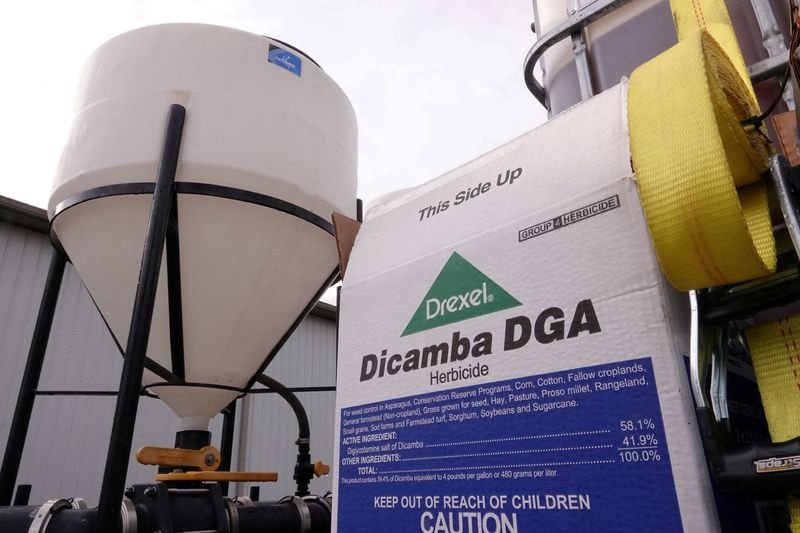US EPA Takes Steps to Approve Dicamba Herbicide for Cotton and Soybean Use
The Environmental Protection Agency (EPA) in the United States is making strides towards the approval of dicamba, a widely used herbicide, particularly for cotton and soybean crops. This action has significant implications for farmers and the agricultural industry at large. Below, we explore the details surrounding this decision and its potential impact on farming practices.
What is Dicamba?
Dicamba is a selective herbicide known for its effectiveness in controlling a variety of broadleaf weeds. This chemical has been utilized in agriculture for several decades, but its use has evolved significantly over time. Originally developed in the 1960s, dicamba has seen a resurgence thanks to genetically modified crops that are tolerant to this herbicide. This compatibility allows farmers to use dicamba to manage weed populations without harming their crops.
The Role of the Environmental Protection Agency
The EPA is responsible for regulating pesticides and herbicides to ensure they are safe for the environment and human health. Before approving any chemical for agricultural use, the agency conducts thorough reviews of its potential effects. This includes evaluating the herbicide’s safety, effectiveness, and impact on non-target organisms. The recent movement towards approving dicamba reflects the agency’s ongoing review process and its commitment to supporting sustainable agricultural practices.
Benefits of Dicamba in Agriculture
Effective Weed Management
One of the primary advantages of dicamba is its efficacy in controlling tough weeds that have developed resistance to other herbicides. This makes it an essential tool for farmers looking to protect their crops and maximize yields. By effectively managing weed pressure, dicamba can lead to improved productivity on farms.
Flexibility in Application
Dicamba can be applied in various ways, including pre-emergence and post-emergence applications. This flexibility allows farmers to tailor their weed management strategies according to specific crop needs and environmental conditions. Moreover, with the development of dicamba-resistant crops, farmers can now apply this herbicide with minimal impact on their crops.
Economic Advantages
The use of dicamba herbicides can translate into significant cost savings for farmers. By effectively controlling weeds, farmers can reduce the need for manual weeding or additional herbicide applications, leading to lower overall production costs. This economic efficiency can contribute to greater profitability for agricultural businesses.
Concerns Surrounding Dicamba Use
Despite its benefits, the use of dicamba is not without controversy. Several concerns have been raised about its potential environmental impact and regulatory challenges.
Off-Target Movement
One of the most significant issues with dicamba is its propensity for off-target movement, which can result in damage to neighboring crops and plants. This volatility has led to reports of crop injury, causing disputes among farmers and raising concerns among regulatory agencies. The EPA is taking these issues seriously and is conducting thorough reviews to address the risks associated with dicamba application.
Environmental and Health Impacts
Critics of dicamba usage argue that its application can have adverse effects on biodiversity and ecosystem health. Additionally, there are concerns about potential risks to human health, particularly for farmworkers and nearby residents. The EPA is tasked with assessing these risks as part of its approval process.
Current Developments in Dicamba Regulation
As the EPA moves towards approving dicamba, the agency is also considering new regulations aimed at minimizing risks associated with its use. These regulations may include guidelines on application methods, timing, and environmental conditions to help mitigate off-target movement and reduce the impact on non-target species.
Stakeholder Engagement
The EPA is actively engaging with stakeholders from the agricultural community, including farmers, agricultural organizations, and environmental groups. This input is crucial for shaping policies that are both effective for farmers and sensitive to environmental concerns. By fostering dialogue among diverse groups, the agency aims to strike a balance between agricultural productivity and environmental protection.
Conclusion
The potential approval of dicamba by the US EPA represents a significant step forward for farmers dealing with weed challenges. While it holds promise for enhancing agricultural efficiency, the agency is mindful of the associated risks and is committed to implementing protective measures. As dicamba remains at the forefront of discussions within both agricultural and environmental circles, the outcome of this decision will ultimately shape future practices in crop management and sustainability.
